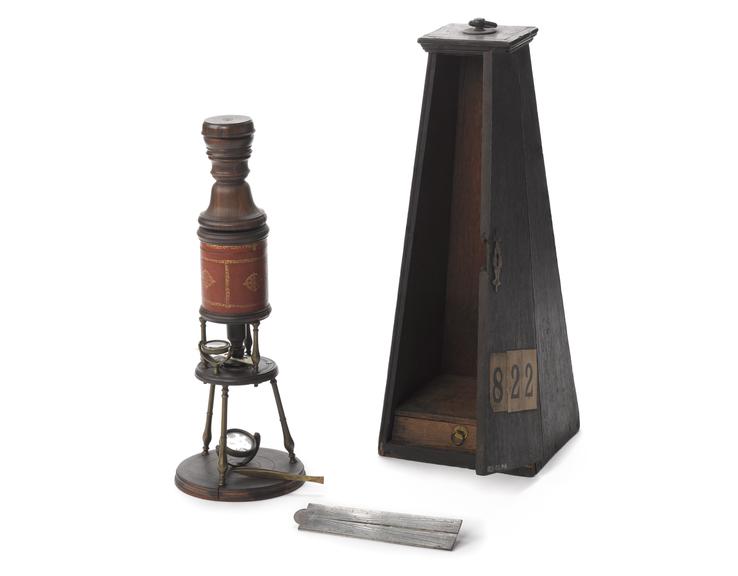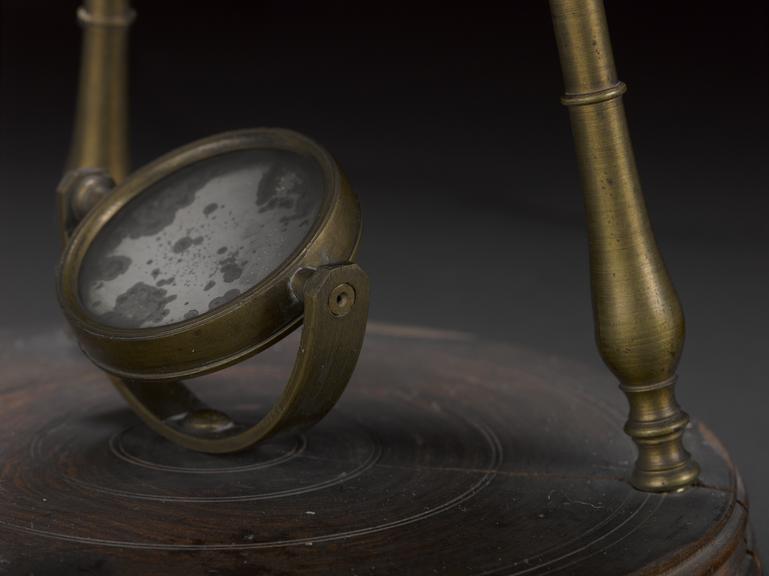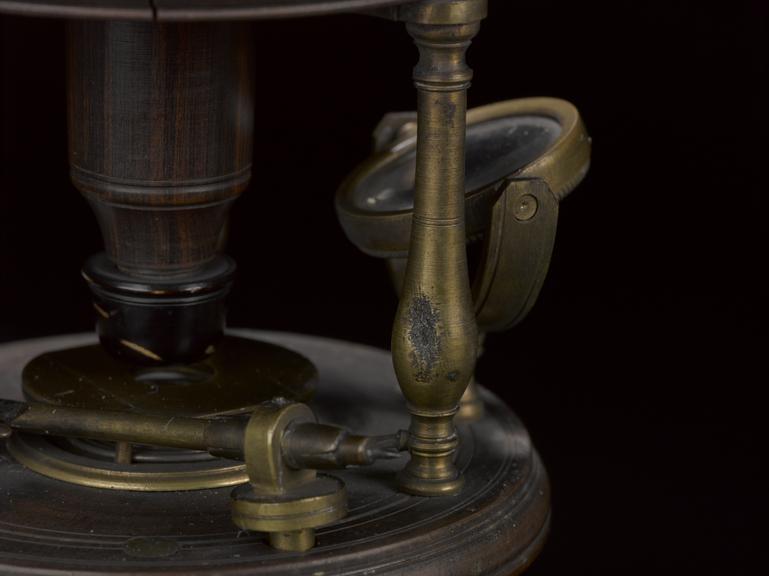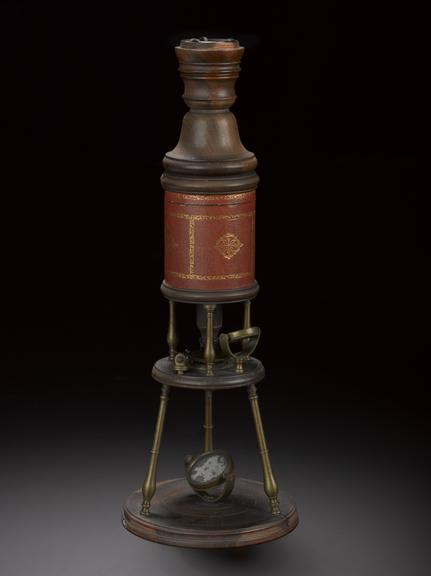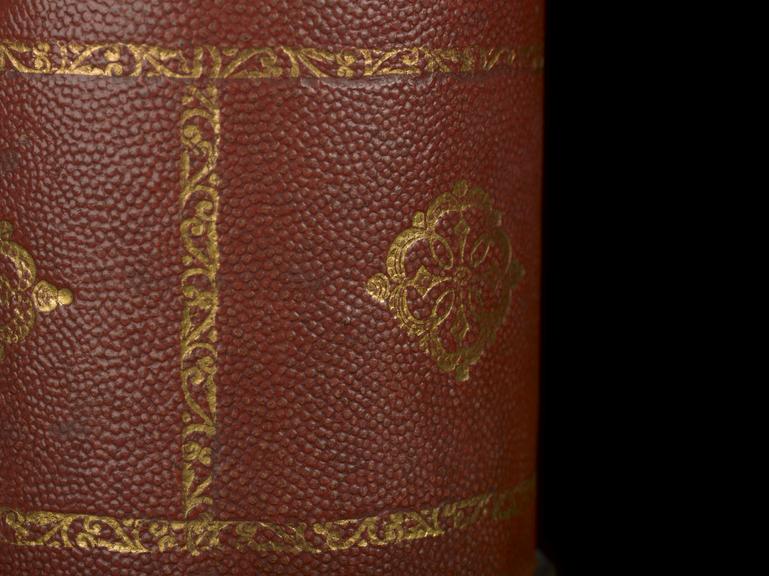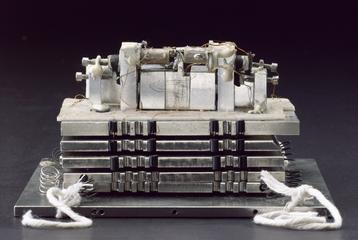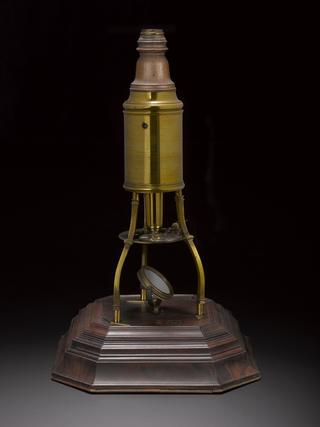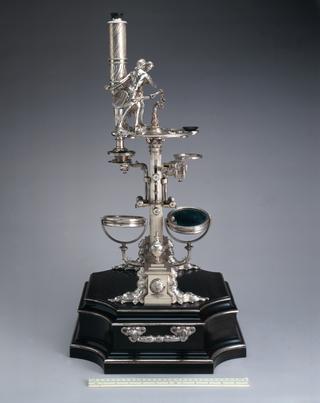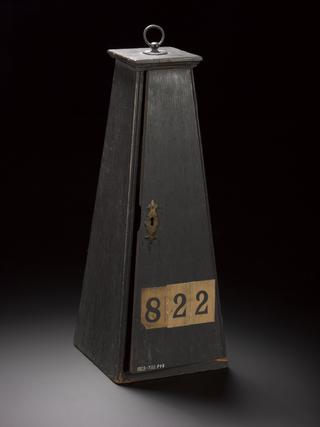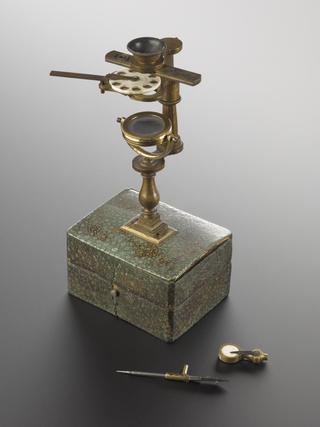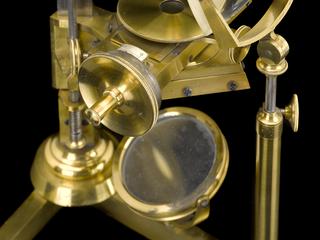Early Culpeper microscope
Compound microscope made by Edmund Culpeper, 1720-30, Moorfields, London. Wooden frame and pasteboard and red leather tube with gold-coloured tooling. Complete with pyramid-shaped carry case, specimen slides and accessories.
More
An early example of a compound microscope by Edmund Culpeper. This form of microscope with its triangular-shaped frame was designed by Culpeper so that the tube was supported above the stage, which improved the experience of viewing specimens. The microscope was focussed by moving the tube up and down. Microscopes of this design became known as the 'Culpeper type' and were popular until the nineteenth century Brass examples began to be made in the mid-eighteenth century, but the first examples were made using wood.. Culpeper (active 1684-1737) was a mathematical instrument maker, whose workshop the 'Old Mathematical Shop' was located at Moorfields in London. He was apprenticed to Walter Hayes in 1684, became a Freeman of the Grocers' Company in 1713 and took over Hayes' business at Moorfields.
- Materials:
- wood (unidentified) , brass (copper, zinc alloy) , pasteboard and leather
- Object Number:
- 1928-782 Pt1/1
- type:
- microscope
- Image ©
- The Board of Trustees of the Science Museum, London


